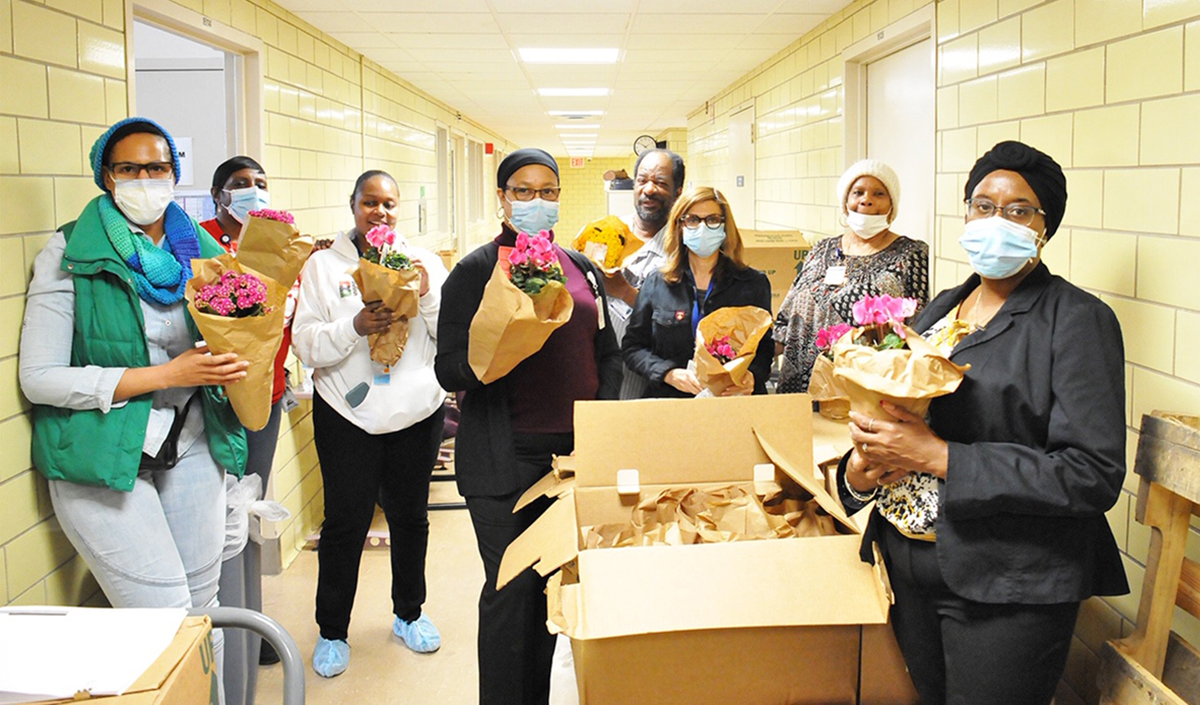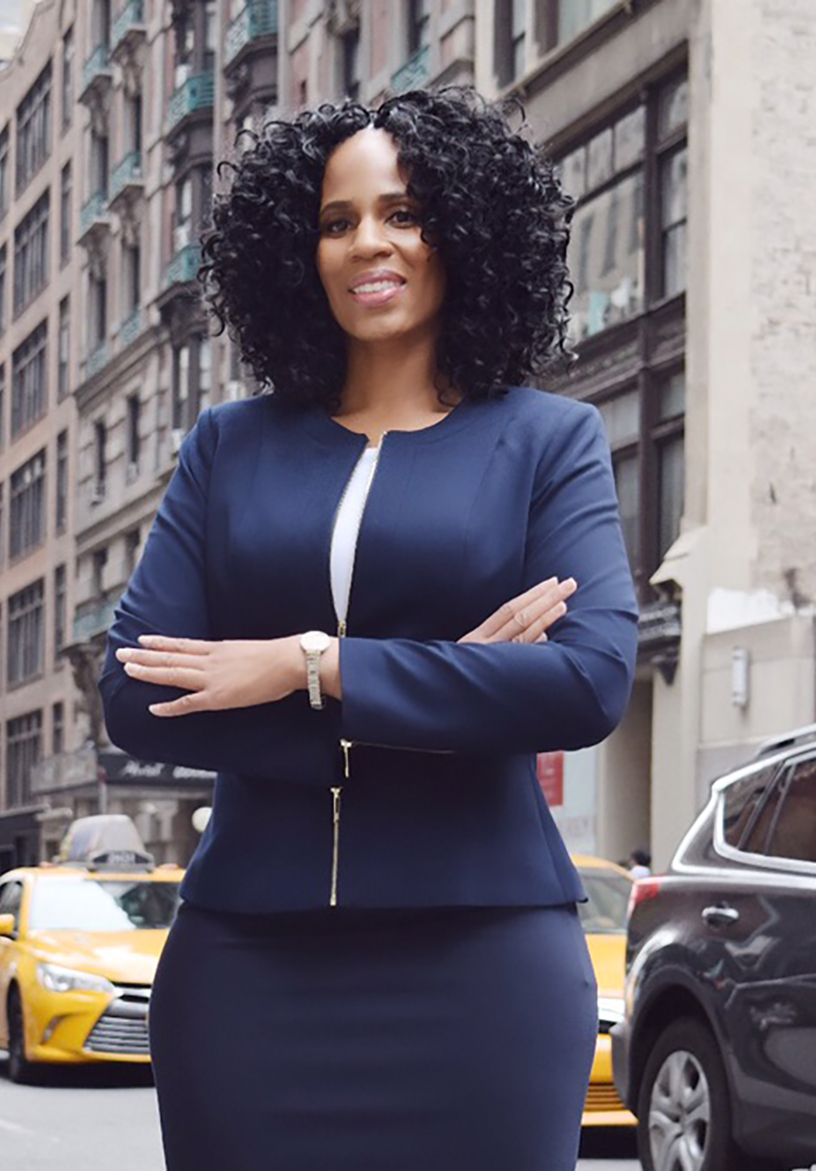Tawanna Gilford: Calm amid the storm
Psychologist steadies the healers responding to public health crisis

Harlem Hospital Center saw the very start of Tawanna Gilford’s life. Through the years, NYC Health + Hospitals/Harlem has provided care to friends, loved ones and fellow community members, and the Harlem-born psychologist returned in 2017 to take a position there.
Harlem has been a center of African-American life since the Great Migration in the 1920s, and the epicenter of the Harlem Renaissance of the 1920s. It was the birthplace of many influential figures, including noted American author and activist James Baldwin, born in the same hospital as Gilford herself.
But in 2020, coronavirus scythed through the New York City metro area and nationwide, with Black communities particularly hard-hit. Healthcare workers in Harlem and elsewhere found themselves in the eye of the storm, confronting a rising tide of cases, seeing loved ones perish and risking the disease themselves as they provided essential care.
Gilford joined her colleagues on the frontlines, providing “battlefield mental health” to everyone from doctors and nurses to the registration desk, transport workers, environmental services, facilities and more in an approach spearheaded by the military.
“You go to where your responders are and offer them emotional support there,” explains the 2002 Binghamton University alumna. “People can’t leave the frontlines, so you go to the frontlines. That’s what we did. That helped significantly because we were able to offer mental health support to individuals rather than having them take time off from work.”
The head of a hospital-wide initiative called Helping Healers Heal (H3), Gilford and her team of volunteers offer emotional support to employees experiencing compassion fatigue, burnout or mental health symptoms related to the COVID-19 pandemic. Measures include one-on-one meetings and group debriefings, as well as innovative, culturally-informed strategies to support emotional wellness, including creative art therapy, meditative practices, mindfulness and breathing exercises.
When adverse events happen, H3 will enter the affected department and provide a safe space to process the situation together. Its members also visit units and conduct wellness checks before problems start. Sometimes a simple conversation can plant the seed for self-care, such as asking individuals about their weekend plans and encouraging them to consider their options.
“It helps people to know that they’re not alone. It helps support the feeling of camaraderie,” Gilford says. “It creates a safe space for people to process emotionally.”
The pandemic can have devastating effects on mental well-being, ranging from depression, anxiety and guilt from losing patients or loved ones, to frustration if an employee catches the virus on the job, even suicide. And coronavirus was far from the only societal stressor this year; Gilford points to political and civil unrest, massive unemployment and concerns about job security, all of which can take a toll.
Healthcare workers facing long hours, frightening times and risks to their own health may wonder if their sacrifice was worth it.
“My role is to reinforce that it was worth it, and to encourage people that they did the right thing, and to get them past feelings of remorse and guilt,” she says.
‘THIS IS IT!’
To return home as a healer for her community, Gilford first had to journey outward. She learned about Binghamton University from a fellow cashier at the grocery store where she worked as a high school student. Her co-worker was a proud Binghamton student, chatting with Gilford about the University experience when she picked up work shifts during semester breaks and encouraging her younger colleague to pursue academic excellence.
Then she invited Gilford to Binghamton for a weekend visit.
“There was the sense of home I felt when I visited the University. I was fortunate to go during a very interesting weekend; I was able to get a wide range of experiences and I attended classes with her,” Gilford recalls. “I told my family: ‘This is it!’ My heart and mind were set on Binghamton.”
While she initially intended to major in biology, her interest shifted after she took her first psychology class. The field drew her, and tapped into both her curiosity and her inner drive to help others. A dual major in psychology and sociology, her studies combined the study of the mind with the larger societal forces that shape individuals.
“It’s very results-oriented. You start off with an issue and work your way with a process,” she says of psychology. “You aim to make things better than the way you found them.”
Three professors made a major impact on her Binghamton experience and her future path: Associate Professor of German and Russian Studies Rosmarie Morewedge, Associate Professor of Psychology Jane Connor and Professor of Human Development Leo Wilton.
Gilford worked as a teaching assistant for all three and also worked in Connor’s multicultural psychology lab, conducting research on how race influences the interactions between campus police and students. Through Connor’s lab, Gilford and a classmate organized a campus forum moderated by the Broome-Tioga NAACP, with the aim of encouraging students to talk about their experiences, similar to the conversations on equity and policing that are occurring today.
Wilton, who remains a mentor, helped Gilford find her identity as a Black psychologist. Public perception more commonly associates Black professionals with social work, Gilford acknowledges, and Black psychologists are still rare.
In 2015, 86% of U.S. psychologists in the workforce were white, while 5% were Asian, another 5% Latinx, 4% Black and 1% multiracial or from other racial or ethnic groups, according to a 2018 report from the American Psychological Association.
Wilton also encouraged Gilford to apply to Columbia University, even though she doubted herself at the time.
“The field needs people like you,” he told her.
His advice and the research experience from Connor’s lab propelled her academic future: She completed her master’s at Columbia, followed by her PhD at the University at Buffalo. The two have remained in touch, and Wilton continues to encourage his former student.
Wilton describes Gilford as one of the most talented students he has taught during his years at Binghamton. She understands the ways in which people and systems interact in addressing the complexity of the structural inequities behind exclusion and marginalization, and has developed a cutting-edge conceptual model for mental health care that makes a substantial contribution to the field.
“This work has been critical — particularly at this moment — in addressing socio-cultural and structural barriers in mental health care for Black communities that experience multi-layered marginalization and structural disenfranchisement,” he says.


